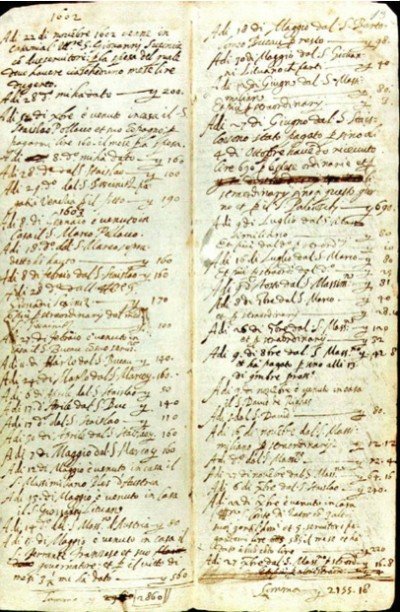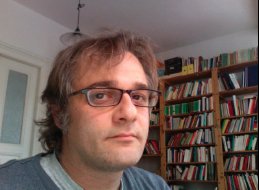Galileo, Engineer: The astronomer’s experiments appeal to an engineer’s mind
The interested reader may have noticed how historians in recent decades have attempted to deconstruct the identity of Galileo Galilei. He is no longer just the great astronomer or even just the founder of the modern experimental method in science. Even the political value of his work and his life, systematically reconsidered in the frame of the debates about the relation between Church and research institutions or between religion and science, is no longer the single relevant perspective for approaching this kind of historical thread. Thanks to the work of historians of science of the last twenty years, readers are now used to very different interpretations. Galileo is now also a heretic, a revolutionary martyr, a mathematician, an Aristotelian natural philosopher, an artist – almost with brush and palette in his hand – and finally a gifted courtier. This, however, is only an apparent process of fragmentation. Historiographically speaking, a process of this kind tends to cancel categories such as “genius” from scientific activities and their histories. Such categories are used to justify the impossibility of explaining historical phenomena. In other terms, the actual history of science requires science and its history to remain rational activities. For this reason, it is relevant to undertake an investigation of Galileo in all of his contexts.
A relevant part of this context is still missing: Galileo as an engineer. Looking from a perspective that takes his practical activities into consideration represents a more unifying approach. Many of Galileo’s theoretical developments found their origins in – and also integrated – the practical knowledge of contemporary craftsmen, architects and engineers. The reconstruction of these practical activities and, in general, of the practical knowledge he shared therefore helps to build a unifying vision of his theoretical developments.
According to a historical thesis first formulated by Mario Biagioli and now commonly accepted, the practical mathematicians, engineers and architects of the XVI century were able to improve their social status in particular by addressing their efforts to meet the needs that emerged in the frame of the new and so-called geometric art of war. The appearance of heavy mobile artillery towards the end of the XV century forced a radical rethink of defense strategies. During the 1630s, the “bastion” was conceived, that is, the fundamental architectonic element of the fortresses and of the city walls which, if built according to accurate geometric calculation, were able to stop the new destructive power.
In analyzing Galileo’s apprenticeship as an artist-engineer between 1584 and 1589 and the work accomplished during his stay in Padova between 1592 and 1610, a Galileo emerges who devoted considerable time and effort to all manner of activities related to warfare. He conceived and designed mathematical instruments for military use, and opened a workshop to build them and various other instruments according to the market model of business-on-demand (Fig. 01). He was interested in artillery, in defense and attack strategies and, above all, taught this “block of knowledge” to many pupils who were destined for high-ranking military careers. All of these activities took place at his house, which therefore resembled more of a military training camp than the tranquil home of an academic engrossed in theoretical speculation. When Galileo first succeeded in improving the magnifying power of the telescope in 1609, he was still involved in such an economy of discourse. His initial idea when developing the telescope was not to found telescopic astronomy, but rather to provide the Venetian navy with a new military instrument. From a social perspective, such behavior was consistent with the career model typically followed by contemporary architects, engineers and craftsmen. Obviously Galileo was not simply an engineer. It is known, for example, that during his stay at Padova, he also formulated the law of fall which later became one of the fundamental theorems of classical mechanics. As mentioned, however, it is exactly the reconstruction of the practical knowledge shared by Galileo that allows one to understand why, despite his apprenticeship, he did not just become an engineer, and when precisely he began to follow other paths. Other historians, such as Jürgen Renn and Peter Damerow, have already demonstrated that the law of fall, for example, was formulated as a consequence of research he undertook with Guidobaldo del Monte concerning the trajectory of projectiles. In light of the developments of the new art of war, this was an issue in the field of ballistics that was extremely urgent at that time.During his stay at Padova, Galileo developed a powerful mathematical instrument for analyzing the resistance to fracture of materials (Fig. 02). Although he first published such a theory in 1638, its origins lie in the frame of a debate concerning the maneuverability of large Venetian galleys. This debate went on to become the central issue of an official inquiry of the Venetian Naval Committee, which took place between 1592 and 1593 and in which Galileo took part as an external consultant.When Galileo left the university in 1584, his further education followed the traditional path of early modern artist-engineers. He gleaned his further education from the practical mathematician Ostilio Ricci, who was employed at court, from the workshop of the famous Tuscan architect, artist and engineer Bernardo Buontalenti, and from the circle around the Accademia del Disegno of Florence. During the same period, Buontalenti was in charge of supervising the construction of the garden of Pratolino, close to Florence, which was conceived by Francesco I, the dux mechanicus. The garden of Pratolino became one of Europe’s marvels, especially because of its pioneer hydraulic and pneumatic system. A great number of local and foreign craftsmen and machine builders commuted between Florence and Pratolino between 1560 until the end of the century to work on this project. The construction of all the pneumatic devices of the garden took place at the exact time of Galileo’s apprenticeship in Florence. Later in his life, Galileo was considered to be an expert in practical pneumatics as well. He conceived new devices too, such as a glass able to control the temperature of the wine it held. Against the background of such experiences, Galileo was one of the first persons to apply the thermoscope to scientific investigations. The thermoscope was an ancient pneumatic device, mentally recycled at the beginning of the XVII century into an instrument able for the first time in history to provide data concerned with temperature without relying on the human senses (Fig. 03). The search for an explanation of the functioning of the thermoscope finally drove Galileo to the formulation of a hypothesis according to which heat has a discrete nature. Although Galileo was never able to achieve a satisfactory theoretical explanation of the functioning of the thermoscope, he further developed this kind of heat doctrine until the accomplishment of a purely mechanistic and atomistic conception of heat that he then published in 1623 in Il Saggiatore.
These investigations clearly show that Galileo was not simply an engineer. Following his work in detail, it becomes evident that the theoretical apparatus on whose basis Galileo approached problems of a practical nature was fundamentally Aristotelian, in both the form and the terms it was known at the end of the XVI century. In conclusion, Galileo’s theories emerged also as a transformation of the Aristotelian doctrines according to the urgent needs and challenges manifest in the practical activities of his time. Galileo was not just an engineer, he was an Aristotelian engineer and, in more general terms, an engineer-scientist.
About the Author
Matteo Valleriani is research fellow at the Max Planck Institute for the History of Science, Berlin. His present projects include:
• Professional Knowledge of the Practitioners
• Galileo as an Engineer
• CRC 644: Transformations of Antiquity (Founded by the DFG)
• Reception and transformation of Ancient Hydromechanics
• Ancient Pneumatics in the early modern garden of Pratolino
• Jesuits on Statics, Dynamics, Mathematics and Astronomy between Galileo and Newton (In collaboration with the University of Tel Aviv)
• The figure of the Jesuit practitioner




